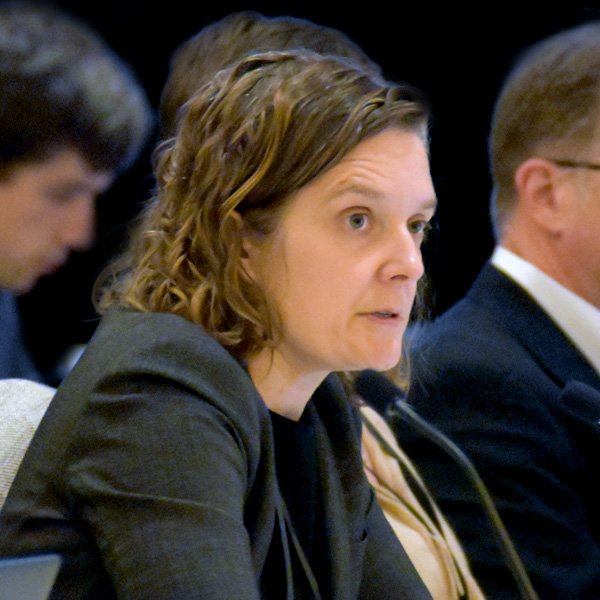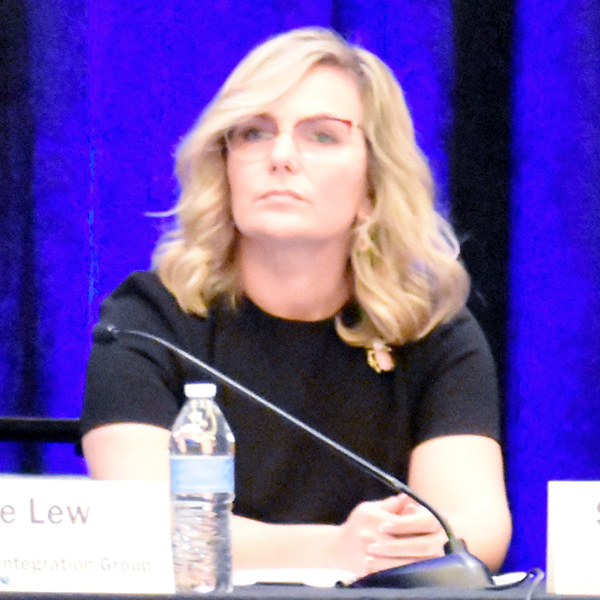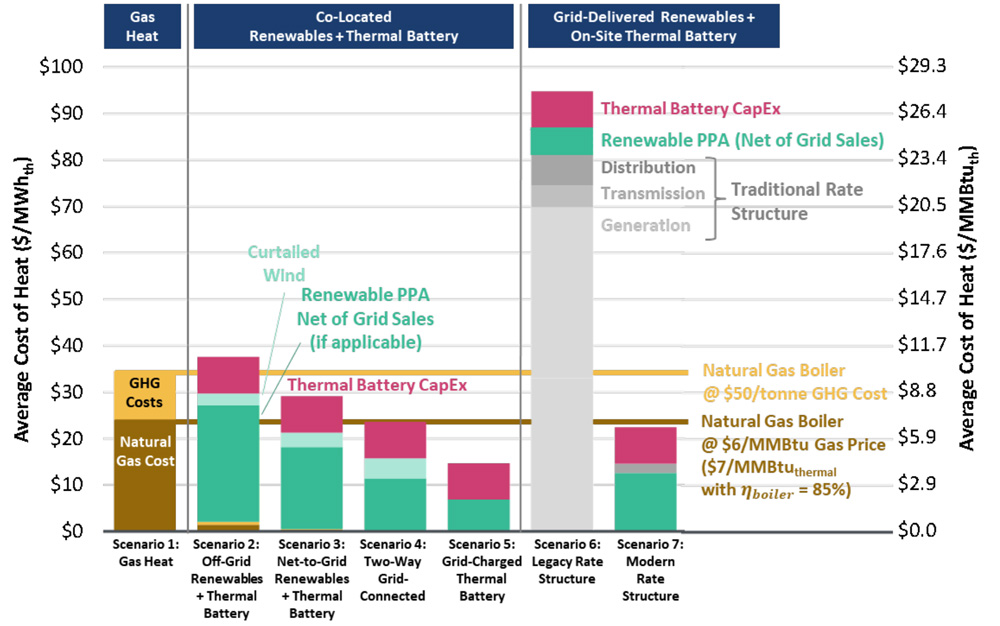SEATTLE — The state-led Committee on Regional Electric Power Cooperation (CREPC) should spearhead an effort to boost development of new transmission in the West, according to the findings of an initiative that included contributions from former FERC Chair Richard Glick.
The findings were the product of the Western States Transmission Initiative (WSTI), a partnership between CREPC and decarbonization nonprofit Gridworks formed to gather input from electricity sector stakeholders on what actions the committee can take to help give Western transmission planning a more interconnection-wide perspective.
The WSTI proposals came just two days after the Western Power Pool (WPP) floated a plan to create a new group intended to spur the kind of interregional transmission development envisioned in the WSTI effort. (See Plan Seeks to Boost Prospects for New Transmission in the West.)
Key among the WSTI recommendations: CREPC should create a Transmission Working Group that would seek federal funding to hire staff and consultants to examine the state of the Western grid with an eye to fostering a shift from the region’s current “bottoms-up” approach to transmission planning, which favors smaller projects that satisfy local needs, to a process that prioritizes meeting the needs of the wider West with larger-scale projects.
The group also would be tasked with identifying specific interregional projects and possibly could seek National Interest Electric Transmission Corridor (NIETC) designations for some of those projects. That would allow them to reduce investment risk by tapping federal funding, Glick pointed out during an Oct. 4 discussion of the WSTI recommendations at the fall joint meeting of CREPC and the Western Interconnection Regional Advisory Body (WIRAB) on Seattle’s waterfront.
“There’s also one other element to it that people may not agree with, especially state regulators: It would also give FERC backstop siting authority for those particular routes that were essentially rejected by one or more states,” Glick said.
The Transmission Working Group also would focus on potential approaches to allocating costs for interregional projects and seek to coordinate approaches among Western states.
The WSTI also recommended the group host a Western transmission conference that would include multiple stakeholders, including officials from U.S. states and Canadian provinces.
“I think the idea of hosting a conference is to get input from … various stakeholders,” Glick said. “Not just utilities and [independent power producers] and transmission developers, but also other entities as well — voices that are normally not heard, whether it be communities, consumer groups, the business community [and] big industrial customers.”
The Transmission Working Group’s other “potential actions” could include encouraging “independent” planning processes; promoting “forward-looking and inclusive” planning; monitoring and participating in FERC transmission planning and cost allocation rulemaking and compliance proceedings; and participating in other regional transmission planning efforts.
‘Meaningful’ Planning
Sharing the dais with Glick at the CREPC-WIRAB meeting, Gridworks Director Kate Griffith said the WSTI recommendations were the product of a six-month project that included interviews with 40 organizations, which included state agencies, non-governmental organizations, utilities, tribes and other stakeholder groups from across the West.
Key themes emerging from those interviews included the “insufficient” pace of transmission development in the West, the lack of “meaningful” interregional and interconnection-wide transmission planning, and the impediment to development caused by the lack of agreement over cost allocation.
Interviewees also said most utilities lack the resources to build major projects on their own and that state/provincial coordination could play a key role in transmission development but would need more resources.
“Today’s presentation and discussion really just starts a conversation at CREPC,” Griffith told the audience at the Seattle conference. “After today’s conversation, CREPC co-chairs will be encouraging you all to share your feedback with them, and we’ll be scheduling a follow-up conversation about whether or not to pursue these recommendations.”
If CREPC decides to advance on the recommendations, Griffith said, Gridworks plans to announce the formation of the Transmission Working Group by the end of October and begin efforts to identify transmission corridors and seek consultants to engage in the effort.
State officials attending the conference largely seemed to support a larger role for CREPC in transmission planning.
Washington Utilities and Transportation Commissioner Ann Rendahl said it is “critical” to bring the states together to participate in the process. Rendahl described her experience with NorthernGrid, the Northwest’s planning entity, as one in which the group tells regulators, “‘We’ll check in with you and see if you have any thoughts’ — and that doesn’t really feel like being included in the process and having a perspective.
“With changes in state policies across the board in the West, it’s important to … get everybody’s views as to what’s important and what’s needed for the states to accomplish” their goals, Rendahl said.
“What happens next depends on the feedback we get from all of you today and over the course of the rest of the conference … and the follow-up conversation that we have,” Megan Decker, CREPC co-chair and chair of the Oregon Public Utility Commission, told meeting participants.
Dare to Dream
“I know how much CREPC enjoys an October surprise,” WPP CEO Sarah Edmonds joked during an Oct. 5 panel at the conference as she described why she released WPP’s “concept paper” for the Western Transmission Expansion Coalition (WTEC) two days ahead of the Seattle meeting.
“I posted that for all of you on [Oct. 3] knowing that we could really leverage this opportunity to be together knowing what the Gridworks recommendations were going to be and what we’re trying to do as well, where I see a lot of potential overlap,” Edmonds said.
Edmonds explained that the WTEC concept took shape after Bonneville Power Administration CEO John Hairston told her he saw a need for BPA to be a strong leader for transmission development in the Northwest but thought the conversation should be held in a forum bigger than what the agency offered.
“I said to him I was interested in it as long as it was a West-wide, inclusive activity,” said Edmonds, whose organization operates the Western Resource Adequacy Program (WRAP) and facilitates the functions of NorthernGrid.
WTEC would intend to take a “top-down” approach to Western transmission planning, one that would include the Southwest transmission planning entity WestConnect, CAISO, BPA and the Western Area Power Administration, and not seek to upend the region’s transmission planning groups, Edmonds said.
“This is not a proposal that fits under FERC-jurisdictional activities,” she said, calling it “an exploratory effort” to engage in a new approach to planning, with FERC-related processes possibly addressed further in the future.
Edmonds also sees the potential for partnership between the WTEC and the WSTI. She said engagement between the two efforts could identify “a range of things we could shoot for” while avoiding coming into conflict or harming each other.
“We might dare to dream of harmonizing, but what about synchronizing?” Edmonds said. “I’m really open for discussion on all those points because I know, and I also would say because BPA … knows, how important the state partnership is on these decisions. The entities that will build transmission and seek cost recovery also understand that critical part of the relationship. It would be new and different to think of a partnership like this, and I know the devil is in the details.”


